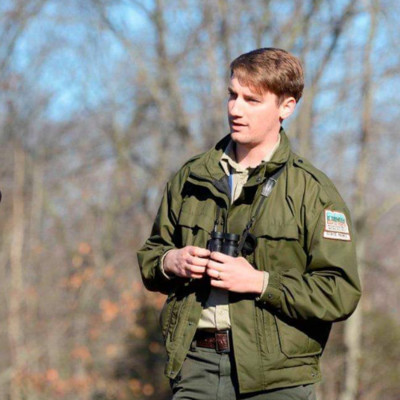
BEDFORD—The Hoosier National Forest staff are partnering with the Indiana Department of Natural Resources (IDNR) to study the long-term effects of management efforts to restore ecological health and diversity to a unique forest ecosystem.

The unique area of the Hoosier National Forest known as the Clover Lick Barrens, located in southern Indiana in Perry County, was recently monitored for plant growth and species diversity. This area is one of only a handful of barrens plant communities in Indiana. Barrens are rare, natural communities often containing wildflowers and grasses, seen in a prairie setting.
Historically, many forces in Indiana created disturbances that benefited barrens, such as fire, grazing from large herbivores, and roosting passenger pigeons. While many of these forces are now gone, barrens remain and need management to prevent them from converting to closed-canopy forests.
Staff from IDNR and Hoosier National Forest hypothesize, based on a review of related scientific research, that woody shrub removal and light canopy thinning will result in a positive response from barrens flora and allow this rare plant community—as well as the animals that depend on them—to persist for generations.
Prescribed burning was recommended in the mid-nineties to restore the ecosystem’s vigor. The goal of the prescribed fires was to reduce accumulated leaf litter, woody shrubs, and young trees. By reducing the amount of leaf litter and woody encroachment, herbaceous native plants have remarkably recovered.
During the recent monitoring of results at Clover Lick Barrens, Hoosier National Forest, and IDNR staff identified rare and uncommon plants like prairie goldenrod, cream gentian, and rattlesnake master.

“Rattlesnake master is relatively uncommon in the state of Indiana,” said Hoosier National Forest Botanist Cheryl Coon. “It’s a wildflower that typically grows in prairies and benefits from periodic fire and other activities that increase sunlight. The seeds grow readily in areas that were just burned, and it looks like they are thriving in the barrens where we performed light canopy thinning.”
Plots were established to monitor the plant response using a device known as a quadrat. Quadrats employ the scientific method of randomized sampling.

“A quadrat is a square plastic measuring device used for sampling plant communities,” said IDNR ecologist Wyatt Williams. “It’s usually made up of a meter-long PVC pipe on each side.”
“Every few years, we visit the same barrens openings at Clover Lick Barrens and place a quadrat on the same points along transects and record what species occur and an estimate of the percentage of the quadrat each species occupies,” said Williams. “With enough snapshots of the same plot of land before and after management, we can show how the barrens plants respond to management efforts over time. In addition to the herbaceous plants we measure, Hoosier National Forest staff gather data on the trees, shrubs, leaf litter, and many other aspects of the plant community.”
Although this is the second year of monitoring, management efforts appear to have benefitted the barrens community, according to forest managers. The barrens’ structure—scattered trees with a prairie-like understory—has improved, and the managers suspect that a similar response will be reflected in the flora.
“We discovered new populations of two state-threatened plants – cream gentian and rough rattlesnake root – in barrens openings that received management where those plants were previously unknown,” said Williams.
So far, the joint monitoring effort has been productive.
“It’s great working with IDNR,” said Hoosier National Forest botanist Jason Isbell. “It’s great to have their help and expertise in monitoring the large barrens areas of the forest.”



